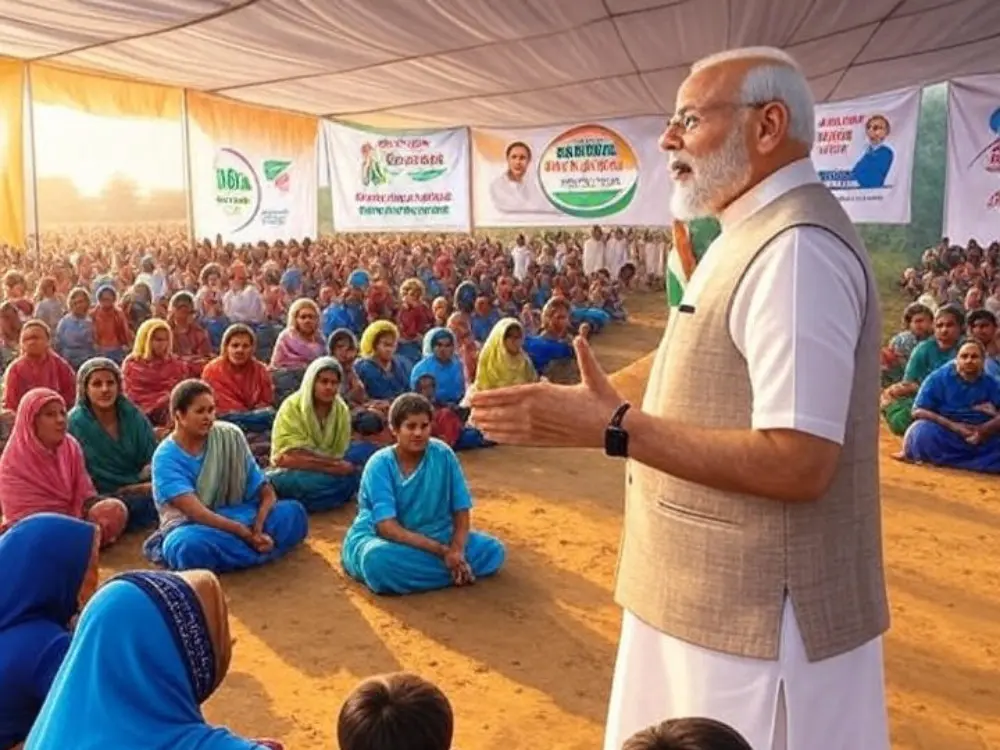The Uttar Pradesh government is on a mission to turn Ayodhya into a “Solar City.” Ayodhya, a sacred city, has been chosen with great reverence, the intention is to embrace its divine energy and utilize it extensively for sustainable electricity. The goal is to meet the city’s power needs in a way that respects the sanctity of the environment, aligning with a holistic and enduring vision. This article provides insights into the action plan, yearly goals, Renewable Energy (RE) potential, and the ongoing efforts dedicated to steering Ayodhya towards becoming a Solar City. It’s an exciting journey that embraces the power of the sun to illuminate Ayodhya’s future.
Table of Contents
ToggleAyodhya’s Solar Glow: Illuminating the Path to the Future
The Uttar Pradesh government, with support from agencies like German development agency GiZ, a study by Fraunhofer Institute for Solar Energy and Deloitte crafted an “Energy Action Plan and 100% Renewable Energy roadmap” for Ayodhya and launching an initiative to tap into abundant solar energy of India. The goal is to power the city using solar energy, reducing reliance on traditional sources.
This effort seeks to provide policymakers and key stakeholders with a clear picture of what a 100% renewable energy system would look like for Ayodhya and how to achieve it. The Solar City Energy Action Plan outlines the design of the target energy system, the required renewable energy and storage capacities for a reliable supply, and the city’s potential for self-sufficiency in solar energy. The Renewable Energy Roadmap, a part of the Action Plan, suggests short- and medium-term measures for successfully transitioning Ayodhya into a Solar City.
Ayodhya: The targeted energy system for 2050 for the city, for 100% RE under a cost-optimized model
A comprehensive plan for the energy future of Ayodhya has been crafted, considering 2020 as the starting point and setting 2050 as the target year. This plan, developed using Fraunhofer ISE’s KomMod tool, utilizes modeling to create a cost-optimized target energy system and explores two additional scenarios. The roadmap for implementation spans short-term actions and strategies for the medium to long term.
The KomMod tool identifies the most cost-effective combination of energy supply technologies based on specific goals and defined conditions. It’s employed to visualize the future energy system for each solar city under different scenarios. To perform this, KomMod requires detailed data, including hourly demand profiles for electricity and heat, economic and technological parameters for considered technologies, and information on available energy source potentials. Climate data also supplements this information.
For instance, the plan envisions a significant push towards the photovoltaic (PV) market in the initial years. This involves demonstrating the technology on numerous buildings, increasing awareness, fostering a market, attracting businesses, and providing training for workers. A suggested approach could include a specialized PV RTS investment program for government buildings and substantial subsidies for private investors.
Key Statistics and Information:
1.532 MW Installed Capacity of Rooftop Solar Systems
Currently, the total installed capacity from Ayodhya’s rooftop solar systems is 1.532 MW. This means that solar energy is actively sourced from rooftops in the city. About 0.115% of Ayodhya’s electricity consumption currently comes from renewable energy sources. This reflects the first step towards cleaner and more sustainable energy in the city’s electricity grid.
212 MW Estimated Rooftop Solar Potential in the City
The rooftop installations in Ayodhya have the potential to generate an estimated 212 MW of solar energy. This indicated untapped potential and future capacity for which solar energy will contribute significantly.
415 MW Target for Rooftop Solar Systems by 2030
Over the next decade, Ayodhya aims to achieve a targeted capacity of 415 MW from rooftop solar systems by 2030. This ambitious target shows the city’s commitment to energy expansion in the renewal energy process (power, transportation, and other services).
2557 MW RE Target for 100% RE in Energy (Electricity, Transport, and Other Sectors)
Ayodhya envisages an overall shift towards renewable energy, with a total target of 2,557 MW to cater not only to electricity needs but also to transportation and other infrastructure This long-range target reflects commitment demonstrating 100% reliance on renewable energy. The city is replacing traditional street lights with more than 2,500 solar panels to reduce energy consumption. These figures represent Ayodhya’s proactive approach to sustainable energy, reflecting current progress and ambitious future goals in the journey towards a greener, more energy efficient future.
These figures represent Ayodhya’s proactive approach to sustainable energy, showcasing both current achievements and ambitious future targets in its journey toward a greener and more energy-efficient future.
Also Read – Top 10 Best Must Visit Tourist Places To Visit In Ayodhya












